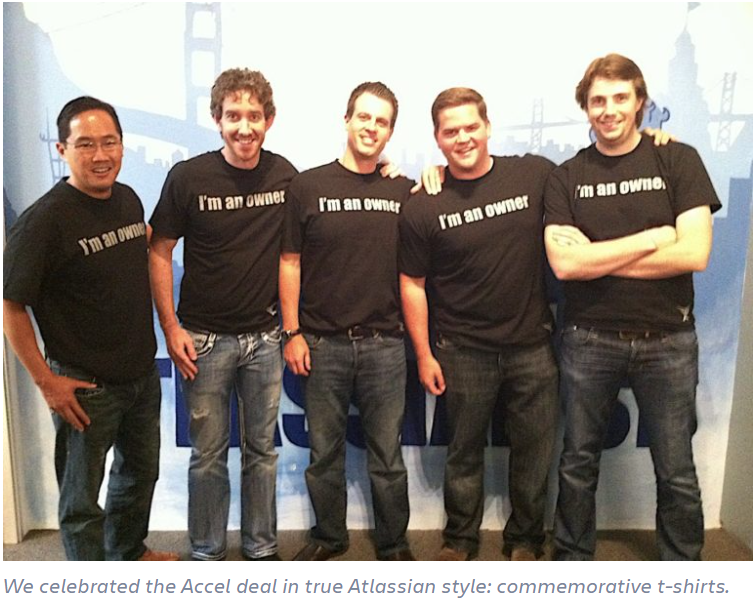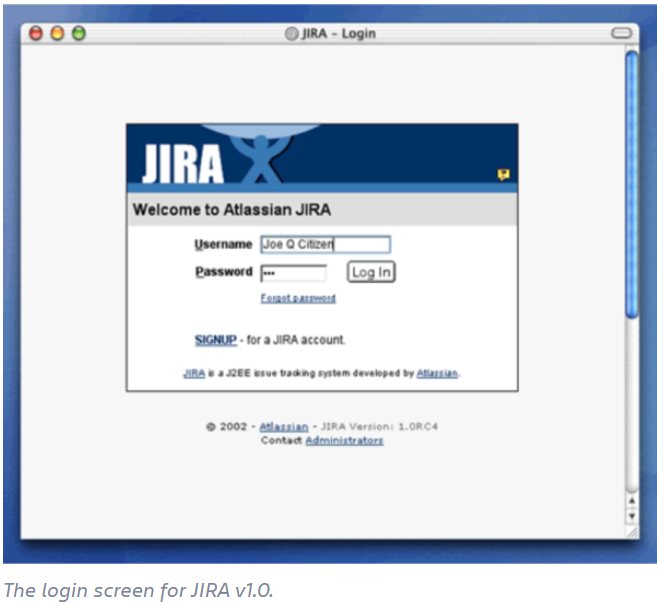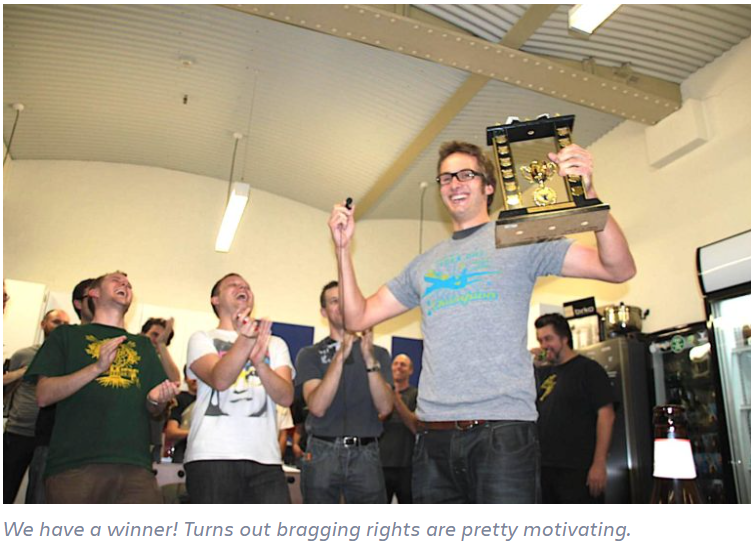20 years of Atlassian, 20 lessons learned
Reflections on strategy, values, and building an enduring company as we celebrate our 20th anniversary.
Wow, 20 years! It seems hard to believe. To say Atlassian has been on a wild ride would be a massive understatement.
We want to take a moment to thank all of our customers, partners, vendors, investors, and of course, all our Atlassian teammates, past and present. What this community has achieved together is nothing short of amazing.
While Atlassian today looks pretty different from the Atlassian of 20 years ago (and will look different from the Atlassian 20 years from now) some things won’t change. Unleashing the potential of every team continues to be the driving force behind everything we do, with our values guiding the way.
Atlassian has an exciting future. But before we get on with the next phase, we want to pause and share some of the lessons we’ve learned from our customers, team members, and the unforgettable experiences we’ve had along the way.
2002
Building your own products beats fixing other people’s products.
Fun fact: Atlassian started as a company that supported other companies’ customer support teams. It meant our co-founders (now co-CEOs) Mike Cannon-Brookes and Scott Farquhar, were taking calls at all hours, which wasn’t much fun. The bug-tracking software they were using wasn’t that great, either. So they built our own tracker, called it JIRA,* and quickly decided they were better off selling Jira than providing support services.
*The leading bug tracker at the time was Bugzilla. Jira is a play on “Gojira,” which is the Japanese title for the original 1954 Godzilla movie.
2003
Software should be bought, not sold.
With most of our target market across the Pacific ocean in the U.S., Atlassian could either invest heavily in a traditional sales team or invest in building a self-service purchase experience. Mike and Scott chose the latter, even though it was a bit risky. They woke one morning in 2003 to find an order from American Airlines lying on the fax machine. According to company lore, they looked at each other and said, “Did you talk to them?” “No, did you?” … “Holy shit! American Airlines saw Jira on our website and bought it just like that!”
2004
The sooner you acknowledge a wrong turn, the sooner you’ll get back on track.
Momentum was starting to build and it seemed like a good time to have a U.S. presence since that’s where most of our customers were. So Atlassian set up a tiny office in New York. But our leadership team realized quickly that we’d over-extended. Closing that office so soon was hard, but it was good practice in making tough calls – of which there would be many to follow.
2005
Innovation needs dedicated time and space. It’s not going to happen on your coffee break.
Our quarterly hackathon tradition, ShipIt, began in 2005. Then, as now, we put business as usual on hold so people had space to wonder, create, test, fail, and try again. The freedom to work on whatever you want, with whomever you want for 24 hours (plus a dash of healthy competition) is a massive energy boost. We’ve had loads of product features and internal programs come out of ShipIt events. Even Jira Service Management, Atlassian’s fastest-growing product today, originated here.
2006
The earlier you start giving back, the easier it is.
Atlassian believes every success is a group effort, so we’re big believers in giving back. When Mike and Scott started the Atlassian Foundation, they pledged to donate one percent of profits, product, equity, and employee time to social impact organizations. At that time, Atlassian was still quite small, and making good on that pledge was painless. (One percent of almost nothing is nothing, right?) And because they baked that pledge into our operating model early on, it’s never been treated as a sacrifice. Just a normal part of doing business.
2007
Meaningful values reflect who you are, not who you wish you were.
Company values shouldn’t be aspirational. They should reflect the best parts of the organization as it already exists. When our founders set out to codify the Atlassian values, they gathered a handful of employees and asked themselves, “What aspects of Atlassian do we want to endure?” Culture changes, but values don’t.
2008
Invest in your user community.
The first Atlassian user group started in 2006 in Reston, Virginia when a Jira admin took it upon herself to get together with other Atlassian users in the area. We were thrilled to discover we had champions like that. So Atlassian started supporting them with pizza, beer, and t-shirts, then basically stayed out of their way. Fast forward to today, and we now have 24,000 users attending Atlassian Community events each year, supported by a dedicated team within the company.
2009
Take the time to connect with customers.
If you’re a high-volume, low-touch business like Atlassian, you have to be intentional about creating moments of connection with your customers. In 2009, we hosted the first Atlassian Summit (now rebranded as Atlassian Team) in the ballroom of a San Francisco hotel. Mike, Scott, and others presented theater-in-the-round style to about 340 customers who peppered they with questions and feedback. While it was all new and a bit awkward and rather unpolished compared to the events we host today, it was a turning point in the way Atlassian builds empathy for and relationships with customers.
2010
Getting funded isn’t worth “selling out.”
By this point, Atlassian had received multiple investment inquiries from venture capitalists and our founders were excited to take our growth to the next level. It was just a matter of finding the right fit. They found it in Accel Partners. They shared Atlassian’s values and our founders’ point of view on how to lead a company, and wouldn’t ask us to upend our model or our culture. We were (and still are) an unconventional company in many ways, but it works.

2011
Ripping the band-aid off reduces customers’ pain.
Sometimes safeguarding the longevity of a business means making tough calls, even though it will cause pain for customers in the short term. Atlassian experienced this in 2011 when we removed support for wiki markup language from Confluence in favor of plain text editing, and again in 2020 when we announced the discontinuation of our Server family of products as part of our journey to become a cloud-first company. The key is to make sure the impact is quick, minimal, and in the service of leading customers into the future.
2012
Rapid growth comes with growing pains.
Like many high-growth companies, Atlassian experienced a brief period of higher than normal turnover. In some cases, people opted out because the company was bigger than what they signed up for. In other cases, their role was outgrowing them, meaning it wasn’t a good fit for either party. It was a bit disconcerting for those who were happy here, and especially for those who’d just joined the company. But the compassion and transparency on the part of our leadership team were reassuring and helped everyone feel valued.
2013
Secondments to other teams build trust, empathy, and cohesion.
Atlassian has a long history of placing people in other teams or offices temporarily (willingly, of course) – sort of like a foreign exchange student program within the company. Scott even moved his family to San Francisco for three months in 2013 and worked out of our office there. The people and teams who participate in secondments consistently report that the experience was a massive win for building relationships and trust.
2014
Investing in company culture pays real dividends.
Atlassian regularly appears on Great Places to Work’s “best of” lists. 2014 was our first appearance in the top spot among Australian companies with over 100 employees. The strategy is simple: hire great people, give them the resources and freedom to do the best work of their lives, and treat them so well they’ll never want to work anywhere else. As a result, we have an incredible team and a reputation that attracts great candidates.
2015
A compelling mission differentiates you as a brand and an employer.
If you do a Google search for “Atlassian 2015,” you’ll get all sorts of results related to our IPO that December. But codifying our company mission was arguably more significant. “Atlassian exists to unleash the potential in every team.” Those nine simple words define who we want to be to customers, to employees, to investors, and other stakeholders. It’s a mission people want to be a part of. It gives us focus internally, and makes it easier to get buy-in externally.
2016
Be transparent, even when it’s uncomfortable.
The lack of diversity in the tech industry had become a prominent topic by 2016 and we released our first-ever Diversity Report that year. Not because Atlassian was more diverse than our peers (we weren’t), but because of our “open company, no bullshit” value. By sharing our data publicly, we were holding ourselves accountable. Our leadership team also wanted to pave the way for other companies to share their diversity data. Atlassian still has work to do on this front, but we’re committed to improving and we share our progress as part of our annual Sustainability Report.
2017
When making a deal, put mission and culture first.
Atlassian has acquired a number of companies over the years, and Trello was the biggest acquisition yet. Not just big in terms of the size of the deal, but more importantly, the size of the teams coming together: Trello was 97 employees strong, and there were over 2000 Atlassians at the time. One of the primary reasons it has worked so well is that each company’s mission, values, and culture were so closely aligned.
2018
Make your big bets early, or not at all.
When Atlassian acquired a tiny startup called HipChat, group chat was only beginning to make its way into the mainstream workplace. We didn’t go big on group chat right away and, in retrospect, we should have. While we were busy trying to retrofit Hipchat to support enterprise customers, then eventually pivoting to build a new group chat product called Stride, Slack took the world by storm. Atlassian was simply too late to be a big player in the group chat market. The bad news is this meant shutting down Stride in 2018. The good news is that our leaders were brave enough to make the call quickly and found new roles for members of the Stride team.
2019
Running a sustainable business is mission-critical.
Business can’t thrive on a dying planet. Climate change presents a risk to every company, so it’s in every company’s long-term interests to reduce their eco-footprint and advocate for sustainable environmental policies. In 2019, Atlassians joined the Global Climate Strike, Mike participated in the UN Climate Action Summit, and we publicly committed to becoming a net-zero emissions business by 2040. We continue to push for sustainability in both the private and public sector, and share our progress on net-zero each year in our Sustainability Report.
2020
Skate to where the puck will be.
When Atlassian shut down all our global offices in March of 2020, the writing was already on the wall: widespread adoption of remote work would be an enduring legacy of the pandemic. Although we didn’t know how long lockdowns would last, we sensed many of our customers would be working as distributed teams long after “normalcy” returned. It was a moment to be bold and chart a new course to build the future of work for ourselves and for our customers. So Atlassian declared that, going forward, team members can choose to work from an office (when it’s safe to open them again), from home, or a hybrid of the two.
It’s scary making such dramatic changes to how a company operates. But this was the right move. Now, Atlassian can recruit from thousands of cities instead of just the 13 where we have offices, as well as provide the flexibility we all desire.
2021
Looking out for your people is job #1.
People are Atlassian’s life-blood. We can have the best tech and the best business strategies, but they won’t mean a thing if our teams aren’t healthy physically and emotionally. 2021 was just as stressful as the year before: bushfires in Australia, an attempted insurgency at the U.S. Capitol, continued social unrest around the globe, and ongoing Covid-related anxiety. Many Atlassians were suffering from full-blown burnout, and everyone was on edge. So our leadership team expanded internal programs that would help counter burnout and reduce the risk of mental health crises. This included guest speakers, access to meditation apps and similar resources, and empowering teams to take additional time off to recharge.
2022 and beyond
Atlassian has been on an incredible journey so far. From a fly-by-the-seat-of-your-pants idea supported by a $10,000 credit card and lots of time to code, to a global enterprise with over 8,000 dedicated employees and 200,000+ customers.
At times, our founders were feeling their way in the dark: how to price our products, how to sell them, how to support customers, and how to figure out what we should build next. It’s a formula we’ve been tweaking and improving and learning from since the beginning, but it’s gotten Atlassian further than anyone ever imagined. Not to mention the unparalleled community of customers, partners, and stakeholders who continue to support us. From all of us to all of you, thanks. 💙
Here’s to the road ahead, and to unleashing the potential in every team.






